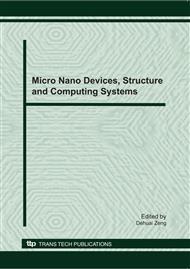p.644
p.650
p.656
p.662
p.667
p.671
p.676
p.682
p.686
A Collaborative Filtering Recommendation Algorithm Based on Time Weight
Abstract:
Personalized recommendation systems are web-based systems that aim at predicting a user’s interest on available products and services by relying on previously rated items and dealing with the problem of information and product overload. Collaborative filtering algorithm is one of the most successful technologies for building personalized recommendation system. But traditional collaborative filtering algorithm does not consider the problem of drifting users interests and the nearest neighbor user set in different time periods, leading to the fact that neighbors may not be the nearest set. In view of this problem, a collaborative filtering recommendation algorithm based on time weight is presented. In the algorithm each rating is assigned a weight gradually decreasing along with time and the weighted rating is used to produce recommendation. The collaborative filtering approach based on time weight not only reduced the data sparsity, but also narrowed the area of the nearest neighbor.
Info:
Periodical:
Pages:
667-670
Citation:
Online since:
December 2010
Authors:
Price:
Сopyright:
© 2011 Trans Tech Publications Ltd. All Rights Reserved
Share:
Citation:


